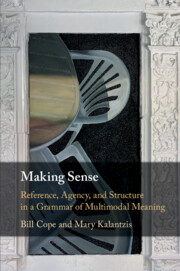Refine search
Actions for selected content:
7 results
Chapter 9 - Integration and general capabilities
- from Part 3 - How: Embedding the Arts in education
-
- Book:
- Teaching the Arts
- Published online:
- 28 July 2025
- Print publication:
- 06 August 2025, pp 280-302
-
- Chapter
- Export citation
20 - Literacies for Teaching
- from Part V - Practice
-
-
- Book:
- The Cambridge Handbook of Technology in Language Teaching and Learning
- Published online:
- 15 June 2025
- Print publication:
- 26 June 2025, pp 332-347
-
- Chapter
- Export citation
4 - Conceptualizing Translanguaging in Black Immigrant Literacies
-
- Book:
- Literacies of Migration
- Published online:
- 30 November 2024
- Print publication:
- 21 November 2024, pp 108-132
-
- Chapter
- Export citation
12 - Technology
- from Part 3 - Cultural contexts of contemporary education
-
- Book:
- Making Sense of Mass Education
- Published online:
- 28 February 2023
- Print publication:
- 10 January 2023, pp 247-267
-
- Chapter
- Export citation
34 - Developing Spanish Heritage Language Biliteracy
- from Part IV - Heritage Language Education
-
-
- Book:
- The Cambridge Handbook of Heritage Languages and Linguistics
- Published online:
- 04 November 2021
- Print publication:
- 25 November 2021, pp 867-891
-
- Chapter
- Export citation
Chapter 11 - Planning for play development
-
- Book:
- Play in the Early Years
- Published online:
- 19 March 2021
- Print publication:
- 24 March 2021, pp 210-234
-
- Chapter
- Export citation

Making Sense
- Reference, Agency, and Structure in a Grammar of Multimodal Meaning
-
- Published online:
- 09 January 2020
- Print publication:
- 30 January 2020
